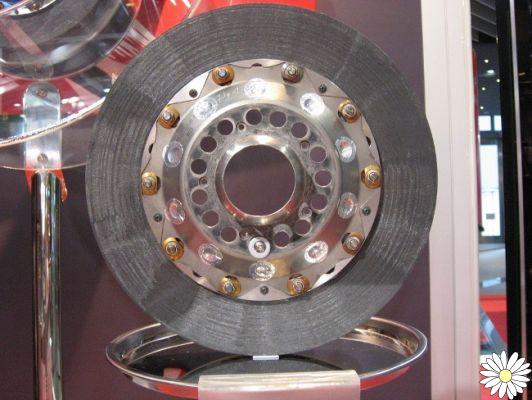
Introduction
Welcome to our article where we will provide you with all the information you need to know about brake discs and car braking systems. In this article, we will answer the most common questions about the number of brake discs in a car, the types of brakes that exist, how brake discs work and their maintenance, when it is necessary to change brake discs and pads, and how brake systems work and what types exist.
How many brake discs does a car have?
The number of brake discs a car has depends on the braking system it uses. Most modern cars have brake discs on the front and rear wheels, which means they have a total of four brake discs. However, some older or smaller cars may only have disc brakes on the front wheels.
types of brakes
There are different types of brakes used in cars, the most common being disc brakes and drum brakes. Disc brakes are more efficient and are used in most modern cars. They consist of a metallic disk that rotates together with the wheel and is tightened by means of a caliper to brake the vehicle. On the other hand, drum brakes are less efficient and are mainly used on the rear wheels. They consist of a metallic drum that rotates together with the wheel and is braked by means of shoes that expand into the interior of the drum.
brake disc operation
Brake discs work on the principle of friction. When you step on the brake pedal, the brake caliper presses against the brake disc, creating friction and stopping the wheel from spinning. Friction between the caliper and the brake disc converts kinetic energy into heat, allowing the vehicle to be braked effectively.
Brake disc maintenance
It is important to carry out regular maintenance on the brake discs to guarantee their correct operation and prolong their useful life. Some recommendations include:
- Visually inspect brake discs for wear or damage.
- Regularly clean brake discs to remove dust and debris.
- Replace the brake discs if they are less than the recommended minimum thickness.
- Replace the brake discs if they are cracked or deformed.
When is it necessary to change the brake discs and pads?
Brake discs and pads should be changed when they are worn or damaged. The wear of the brake discs and pads depends on the driving style, the road conditions and the quality of the components. Some signs of wear include squealing brakes, vibrations in the brake pedal, and reduced stopping power. It is recommended to check the brake discs and pads regularly and replace them if necessary to ensure driving safety.
Types of brake systems
There are different types of braking systems used in cars, the most common being hydraulic braking systems and anti-lock braking systems (ABS). Hydraulic brake systems use brake fluid to transmit brake pedal pressure to the wheels, allowing the vehicle to brake efficiently. On the other hand, ABS brake systems prevent wheel lockup during hard braking, helping to maintain vehicle control and reduce stopping distance.
Frequent questions
1. What is the service life of the brake discs?
Brake disc life can vary depending on driving style, road conditions and the quality of the brake discs. In general, brake discs can last between 30,000 and 70,000 kilometers. However, it is important to perform regular maintenance and watch for signs of wear to determine when replacement is necessary.
2. Is it necessary to change the brake discs if only the pads are worn?
In most cases, it is not necessary to change the brake discs if only the pads are worn. However, it is advisable to inspect the brake discs for wear or damage. If the brake discs are worn or damaged, it is advisable to replace them together with the pads to ensure optimal braking system.
Conclusion
In short, brake discs are essential components in a car's braking system. It is important to know the number of brake discs in a car, the types of brakes that exist, how brake discs work and how they are maintained, when it is necessary to change brake discs and pads, and how brake systems and what types exist Performing regular maintenance and being attentive to signs of wear is essential to ensure driving safety. If you have any additional questions, feel free to leave a comment and we'll be happy to help.
Thanks for reading our article and we hope you found it useful! Do not forget to leave us your comments and share your experiences with the brake discs and brake systems in your car.
Until next time!


























